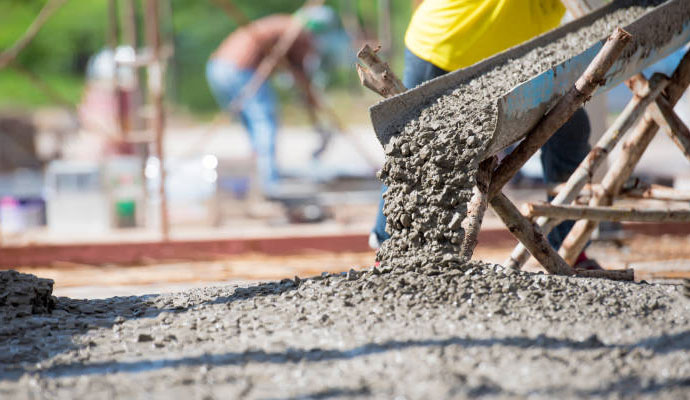RCC Construction in Bangladesh
RCC’s full form is Reinforced cement concrete, also called reinforced concrete (RC). In Bangladesh, RCC homes and building designs are gaining in popularity. The meaning of RCC is that it is a mixture of concrete and steel reinforcement.
Properties Of Reinforced Concrete
- The combination of concrete and steel reinforcement is the building block of reinforced concrete or RCC.
- Because steel is weak in compression and strong in tension, but concrete is weak in both directions, the two materials complement one another.
- This characteristic of reinforced cement concrete allows it to withstand compressive and tensile pressures placed on the structure.
Types Of Reinforced Concrete in Bangladesh
RCC Column Types Based on Shapes

- Circular for good architectural views that showcase the outdoors
- It is customary for any construction to be square or rectangular.
RCC Column types according to length
- Short column: if L/B > 12
- Long column: if L/B exceeds 12
where B is the column's width and L is the column's height.
RCC Column types based on moments
- Designed for axial load and moment in two directions, the biaxial column
- Designed for axial load and moment in a single direction, uniaxial columns
Mostly Used Reinforced Concrete Types Are
Fiber Reinforced Concrete- Concrete with fiber reinforcement uses organic, mineral, and steel fibers to reinforce the pavement.
- Possess a good tensile strength.
- The overall cost is lower when steel fibers or other fibers are used as reinforcement rather than steel rods.
Ferrocement Concrete- It is created by mixing cement mortar with wire meshes.
- Extremely adaptable and light
- It can be manufactured into any required shape and is
- Easy to build.
- Improved lifespan
- Earthquake resilience at minimal cost
Polymer Concrete- It is made by completely swapping out the cement hydrate binders found in traditional cement concrete and then polymerizing the polymeric concrete at ambient temperature to harden it.
- Greater durability
- Adherence
- Chemical resistance
- Resists abrasion
Types of Reinforcement Used In RCC Concrete
Steel that has undergone the rolling process at a temperature higher than its recrystallization temperature (about 1700° F or above) is known as hot rolled steel.
The advantages of hot-rolled steel are-
- Low cost: Less processing is required, which lowers the cost.
- Improved workability: The material is simple to mold and shape since the hot rolling process takes place at high temperatures.
- Little to no internal stress: The steel is slowly cooled throughout the hot rolling process, thus normalizing its structure and removing any internal tensions.
The four types of hot-rolled steel are:
- Mild steel bars: Hot-rolled rolled mild steel bars have a round shape and a smooth surface.
- Hot rolled mild steel ribbed bars: These consist of ribs that aid to strengthen the bonds between the bars by having ribs on them.
- Hot-rolled high-strength ribbed bars: They are created by high-strength microalloying and hot rolling
- HYSD bars: Hot-rolled high yield strength deformed bars.
Cold Twisted Deformed Bars
- These bars are made of high-grade mild steel that has been hot rolled in the mill and has three or more parallel straight ribs on them.
- Significantly more quickly prone to rust